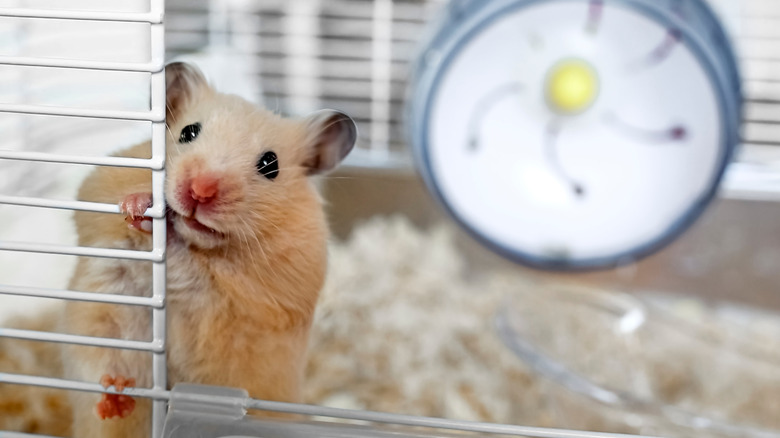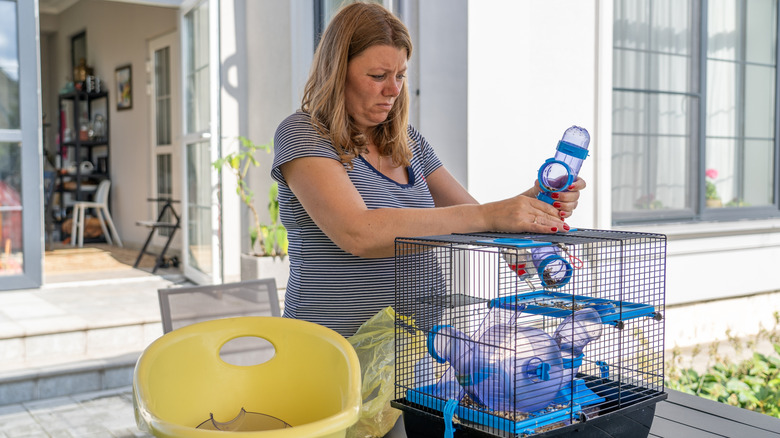How Often You Should Clean Your Hamster's Cage (And The Best Way To Do It)
We may receive a commission on purchases made from links.
A safe, clean environment is important for your hamster's well-being. It can help prevent health issues like hamster mites, which can be challenging to get rid of, as well as keep your furry, pocket-sized friend from getting ill. However, cleaning your hamster's cage might seem a bit daunting. How often should you clean it? Does everything need to be cleaned at once? Is it stressful for your hamster?
To start, you should have a few items handy to help with cleaning. These include gloves, bedding, wipes, and cleaners like the Nature's Miracle Small Animal Cage & Surface Cleaner. You need to be cautious when using cleaning wipes if you have pets, so be sure to check that they — and your other cleaning supplies — are safe for hamsters before using them. You'll also want to use soap and water to clean any items that contain food or water, such as dishes and bowls. If your hamster lives in an enclosure with plastic tunnels, a bottle brush is also useful for cleaning out those smaller, enclosed spaces.
Thankfully, there are also easy ways to reduce stress in your hamster when cleaning its cage. First, you can schedule cleaning in the evening or nighttime to coincide with your hamster's natural nocturnal cycle. In addition, you can spot-clean soiled areas while doing deep cleans less often or if your hamster has been ill. Another time-saving tip is to divide your hamster's enclosure into sections and then clean one section each day. This should help keep your hamster's scent in the enclosure and lower its stress levels.
Create a schedule for hamster cage cleaning
Creating a cleaning routine with your pets can help ease stress for both you and your hamster, as well as help you stay on top of things. Where should you start, you may ask? Well, divide your cleaning into daily, weekly, and monthly tasks.
Daily tasks include tidying your hamster's enclosure, replacing its food and water, and gently wiping down or scrubbing any soiled food or water dishes. You'll also want to inspect your hamster's bedding and replace anything that smells or looks soiled daily. If you have a dust bath for your hamster, replace the substrate daily, too. It should also be left no longer than 12 hours at a time in the enclosure to prevent excess soiling.
Weekly and monthly cleaning should be more thorough, and you should move your hamster to a travel enclosure to reduce stress. Then, the fun begins. Be sure to completely change your hamster's bedding weekly. Next, remove all items from the enclosure and wash them. All toys and accessories should be wiped down or scrubbed at least monthly depending on how soiled they are. Then, dry all items thoroughly after cleaning to prevent mold growth. Once you're done, you can safely return your hamster to its enclosure to enjoy a happy and healthy place to explore.

